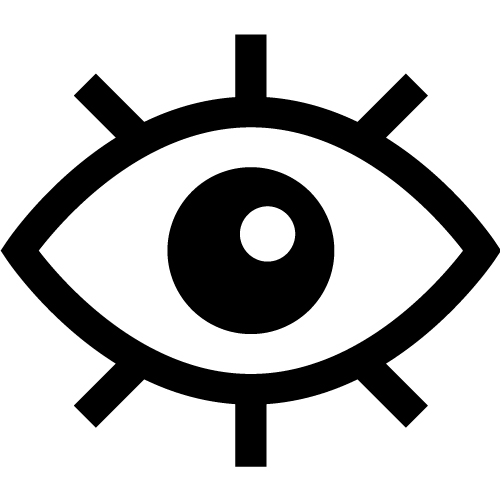To better respond to a more complex and less predictable business environment, more organizations are prioritizing learning and agility as core cultural traits.
Businesses everywhere are facing unprecedented change and myriad threats — from technology innovation and business-model disruption to new sources of competition and changes in consumer behavior. Leadership teams are under constant pressure to hit their numbers and to stave off the threat of activist investors looking to exploit signs of vulnerability. The pace of all this change demands a level of responsiveness and agility that has not typically come naturally to most companies. Increasingly, successful organizations — and their leaders — are defined by their capacity to learn, adapt and innovate at speed.
This need to adapt is highlighted by a steady decrease in corporate longevity. Strategy and innovation consulting firm Innosight reports that the average lifespan of companies in the S&P 500 fell from 33 years in 1964 to 24 years in 2016 and is forecast to shrink to just 12 years by 2027.1 Observing a similar trend, a report by Credit Suisse states that “disruption is nothing new but … the speed, complexity and global nature of it is. In fact, it is clear that a number of sectors are currently impacted by multiple disruptive forces simultaneously.”2
Regardless of geography, for organizations to thrive in today’s environment they must develop the agility to adapt quickly to changing market circumstances and customer needs. However, most companies are not prepared for this era of hyper-Darwinism; they are not structured for rapid response.
In today’s world, strategic goals are frequently being reset, so companies have to be able to slow down, rebalance and change direction. Such ambidexterity — knowing when to accelerate, when to change and when to maintain the course — is usually found in organizations where it is in the cultural DNA to place a high value on learning.
Out of eight possible organizational culture styles identified by Spencer Stuart, a learning orientation appears first or second in only 7 percent of companies (see sidebar below). The other 93% risk having insufficient capacity to adjust to the changes taking place around them. We believe that developing a culture that emphasizes flexibility and learning will be a critical element in future-proofing an organization.

In a comprehensive analysis of the cultures of more than 230 companies and the leadership styles and values of more than 1,300 executives published in the
Harvard Business Review, we found that out of eight possible culture styles, learning appears first or second in only 7 percent of companies. In “
The Leader’s Guide to Corporate Culture: How to Manage the Eight Critical Elements of Organizational Life,” co-authors Jeremiah Lee, Jesse Price (Spencer Stuart), Boris Groysberg and L. Yo-Jud Cheng (Harvard Business School) argue that in a dynamic, uncertain environment, in which organizations must be more agile, learning gains importance. Over the past decade, we have seen a clear trends towards prioritizing learning to promote innovation and agility as businesses respond to increasingly less predictable and more complex environments.
Rebalancing
It is interesting to note that the very motivation that drives organizations to be focused on results can also serve as a barrier to flexibility and learning, both of which may be in investors’ interests. When a culture over-emphasizes results, people are tempted to take shortcuts and rarely explore alternative options. There is a danger that the relentless focus on delivering superior returns to shareholders will obscure the need to step back, reflect and understand critical changes taking place in the context of the business. Indeed, organizations increasingly need to operate at twin speeds, going all out in pursuit of clear goals that ensure the health of the business in the near term, while remaining nimble and responsive to changing signals that may threaten its longer-term viability.
Leadership in today’s complex world means learning from multiple inputs. If the business is focusing solely on results, something may be out of balance.
These signals of change might come from any direction. Just as a helicopter pilot has to cross-check instruments that track the complex multi-dimensional nature of flight (altimeter, speedometer, compass, rate of climb/descent, etc.), so a great leader needs to be aware of the many dials that track a company’s relationship to shareholders, employees, customers and the wider community. Context will determine the importance of each dial and how best to calibrate the available information.
Leadership in today’s complex world means absorbing and learning from multiple inputs. If the business is constantly in acceleration mode and focusing solely on results, something may be out of balance. As a leader, therefore, you need the ability to stop, reflect, see what is happening and pick up again, perhaps with an adjusted set of goals. These new goals might involve what Henry Mintzberg describes as a philosophical shift from more to better and from thinking about managing human resources (traditional HR) to bringing about human resourcefulness.3 Having a learning culture makes it easier to manage this rebalancing process, although you do need to think carefully about whether some of the levers at your disposal are working against your intention to prioritize learning across the enterprise. For example, we have seen how easily legacy performance management systems, including incentives and rewards, can sabotage the very learning culture that leaders wish to develop.
What defines a learning culture?
Organizational learning is hard to achieve from a culture standpoint. First, the need to change and do things differently has to be clearly communicated and constantly reinforced by the senior leadership team, and especially the CEO. Second, leaders must embody and exemplify the open-mindedness, inquisitiveness and inclusivity they wish to see at all levels in the organization. Third, barriers between functions and divisions need to be dismantled — along with many of their systems, processes and norms — to enable groups that have not encountered each other to work together toward a common goal, exploring new solutions and learning from each other.
For an individual, learning is often an independent activity, whereas in an organizational setting it is also an interdependent one, enhanced by what organizational culture expert Edgar Schein calls a mutual attitude of “humble inquiry.” Organizational learning requires a shared sense of purpose (what do we need to learn about and why?), a desire to explore and a sense of curiosity, creativity and even playfulness. Interdependence is amplified by dialog, collaboration and the effect of cross-functional teams sparking off each other and exploring alternatives.
It is important to recognize that most organizations are made up of a variety of subcultures, which is healthy when you consider the very different drives and qualities expected of, say, a sales team versus a finance function. Strong learning cultures appreciate and make good use of the diversity that emerges from different subcultures. On the other hand, cultural fragmentation can lead to inefficiencies, misunderstandings and lack of alignment — which is why it is so important for leadership teams to identify those elements of the culture that are universal, and to see culture as a business process that has to be actively managed and shaped in order to achieve business goals.
What is a learning culture?

What it feels like
Characterized by exploration, openness and creativity. An inventive and open-minded place where people spark new ideas and explore alternatives

Advantages
Improved innovation, agility and organizational learning

Watch outs
Too much emphasis on exploration can lead to a lack of focus and inability to exploit existing advantages

Successful employees
Employees are united and energized by shared curiosity and inquisitiveness

Successful leaders
Leaders emphasize innovation, knowledge and adventure
What does a learning organization look like?
In the successful learning cultures that we have observed, rigidity and rules-based thinking are replaced by a shared acceptance that change is both inevitable and necessary. Change happens because people make daily choices to do things differently, but leaders have to foster an environment in which people want to learn, can see the payoff, and are empowered to experiment and fail fast.
It is hard for an individual to adapt and change and even harder for an entire organization. It requires relentless, concerted effort and committed leadership. People look for excuses to avoid change. They often prefer the comfort of tried-and-tested routines and are quick to point to contradictions or inconsistencies rather than seek out opportunities to reappraise and revise their ways of working.
In a learning culture, people are inquisitive about how their work aligns with overall thinking and make choices that are consistent with strategy. Individuals need a high level of self-awareness (even detachment) to acknowledge what they do not know, enough humility to shed their preconceptions, and a deeply held curiosity about what they might discover. Above all, they need to be forward-thinking, viewing the future with a sense of optimism and possibility.
A large financial services institution has enshrined the importance of learning into its strategy. For several years the leadership team has continually reinforced the idea that only an agile organization can maintain a competitive edge in a fast-moving world. Although agility is a top-down imperative, the idea has been embraced at all levels, with teams empowered to work together to explore new ideas and solutions and to innovate. So pervasive is this thinking that teams act like tribes, committed to a core belief in the value of agility and the power of learning, unafraid to experiment, take risks and fail fast. This is unusual in an industry where decision making traditionally resides further up the pyramid. Indeed, hierarchical structures generally allow little flexibility or freedom further down the organization, which is where the majority of contact with customers takes place.
An emphasis on learning has been at the heart of this transformation. Everyone who starts in a new role in one of the top tiers of management is assessed, regardless of whether they are internal or external hires. They learn about their development needs and work with HR and their line manager to create a tailored development plan. Data on individuals is then aggregated to the team level and shared in workshops designed to improve team effectiveness.
Making the transition to a learning culture
Many organizations with a strong learning culture didn’t start out that way. As with any cultural change, the transition to a learning culture takes deliberate effort. A willingness to learn and adapt needs to be embodied by the leadership and infused throughout the organization. It’s highly likely that leaders will have to shed their authority-based, top-down, directive approach and show humility, even vulnerability, in acknowledging that they are not fully in control of circumstances and do not have all the answers. Their job is to release the power of collective learning through collaboration and shaping the organizational context, while modeling the behaviors they wish to see in others.
Any organization seeking to develop as a learning culture needs to pay attention to what motivates employees, appealing to their sense of purpose and stimulating the capacity and desire in each individual to learn, to see things afresh and — on the basis of a newly attained understanding or broadened perspective — to adjust their own attitudes and behaviors. As Brené Brown points out in
Daring Greatly, this kind of learning, and the personal growth that goes with it, usually involves a degree of vulnerability — this is as true for senior leaders as it is for the rest of the organization.
Carol Dweck famously identified an important distinction between people with fixed versus growth mindsets.4 The fixed mindset is based on a belief that your qualities are carved in stone, resulting in the desire continually to prove yourself rather than improve yourself. The growth mindset, by contrast, is the belief that you can cultivate your basic qualities through your own efforts; this mindset holds that despite differences in talent, aptitude, interests and temperament, anyone can change and grow through application and experience.
Since there is a close link between learning and the desire for self-improvement, it stands to reason that any organization wanting to put itself on a stronger learning trajectory should look for ways to foster the growth mindset among its employees. Leaders wishing to motivate those strongly disposed toward learning can appeal to their desire for autonomy and their enjoyment of solving interesting problems. They can frame challenges in the most engaging way possible, invite learners to participate in defining the challenge, emphasize the need for creative thinking and encourage them to play a significant part in finding the solution.
 Questions for senior leaders
Questions for senior leaders
The pace of change is forcing organizations to shine a spotlight on culture. At Spencer Stuart, we believe that culture is a foundational business system that can be diagnosed and actively managed. We can help you diagnose your culture — at the company, business or functional unit, and team levels — and assist you in shaping it for more successful outcomes. In the context of this article’s theme, consider the following questions:
- To what extent could I describe my company as a learning organization?
- What steps could I take to increase the priority given to learning?
- Can I identify key influencers in the organization who have a strong orientation toward learning?
- What structural changes are needed to support a cultural shift toward learning?
- Am I building ambidexterity in my organization, i.e., the dual capacity to deliver results now and adapt to evolving challenges?
- Where do I put learning among my own personal priorities?
Learning under pressure
Today’s leaders have to perform a continual high-wire act, balancing the need to meet investor expectations with the vital task of reshaping and reorienting the business to ensure its survival. Dealing with the tension between stability, continuity, risk-taking and change demands vision and conviction; it may involve leaders making difficult trade-offs or living with contradictions, for example having one division of the business focus on driving results to maximize cash generation in a mature segment while another pursues a more experimental, disruptive path to innovation. Getting the balance right may require new capabilities, a new culture and a new style of leadership.
The link between leadership and learning is getting stronger all the time. CEOs are uniquely placed because they must straddle the organization and the outside world. They are responsible for everything that happens in the business, from strategy, structure and talent to values and culture. Yet it is also their job to respond to what is going on in the outside world. They need to find the capacity (and mental space) to learn about what is changing in the external environment; apply judgment in identifying where the real threats and opportunities lie; and figure out how to best reflect those changes inside the organization.
Today’s leaders have to perform a continual high-wire act, balancing the need to meet investor expectations with the vital task of reshaping and reorienting the business to ensure its survival.
An overly narrow focus on the short-term demands of shareholders can be an impediment to this kind of broad-based learning. A balance needs to be struck between creating returns for shareholders and paying attention to customers, employees and the impact the business has on the wider ecosystem, such as partners, vendors and communities. The more attention is paid to each of these constituents, the more the business can learn from them.
The leadership challenge
With the business environment in a constant state of flux, leaders will have to get used to a more agile, multifaceted way of running their companies, relying less on what they know and understand and more on what they and the organization are capable of learning from one day to the next. They will need to make this a deliberate focus; reinforce the learning imperative in their communications; place “high learners” in positions of influence; and provide recognition to those who adjust to a more collaborative, learning-oriented style of working.
It takes courage and vision to lead the transition from a hierarchical culture built on authority, order and safety to one that prioritizes learning. Yet this shift is part of a global trend away from highly formalized structures and toward more informal, flatter networks, where “teams of teams” are encouraged to iterate, come up with ideas and solutions, and then share what they learn across the entire organization.
At its best, the learning organization continually adapts its behavior to reflect the insights gained through this process. The result can be a thriving entity that exudes vitality and purpose, motivates good learners to achieve and rewards them for the legacy they leave others. It also makes the organization attractive to the most sought-after talent.
1 “2018 Corporate Longevity Forecast: Creative Destruction Is Accelerating.” Scott D. Anthony, S. Patrick Viguerie, Evan I. Schwartz, and John Van Landeghem. Innosight. February 2018.
2 “Global Equity Themes.” Credit Suisse Equity Research. August 24, 2017.
3 Henry Mintzberg. Rebalancing Society. Berrett-Koehler. Oakland. 2015.
4 Carol S. Dweck. Mindset: The New Psychology of Success. Ballantine. New York. 2016